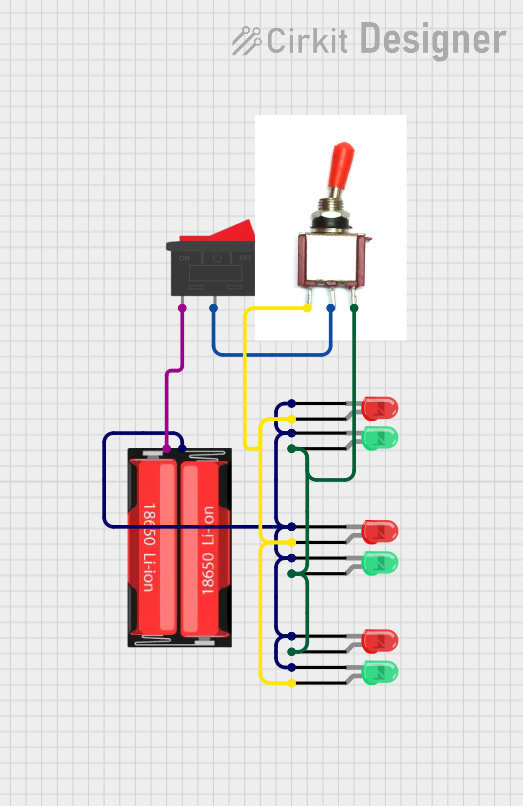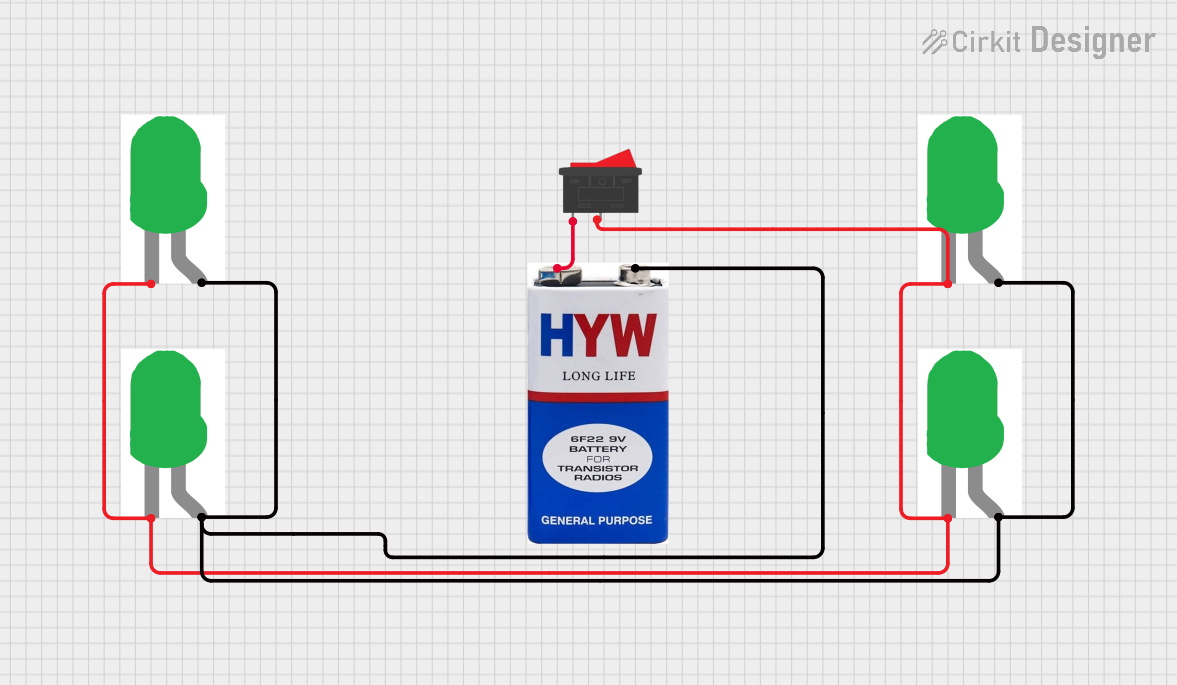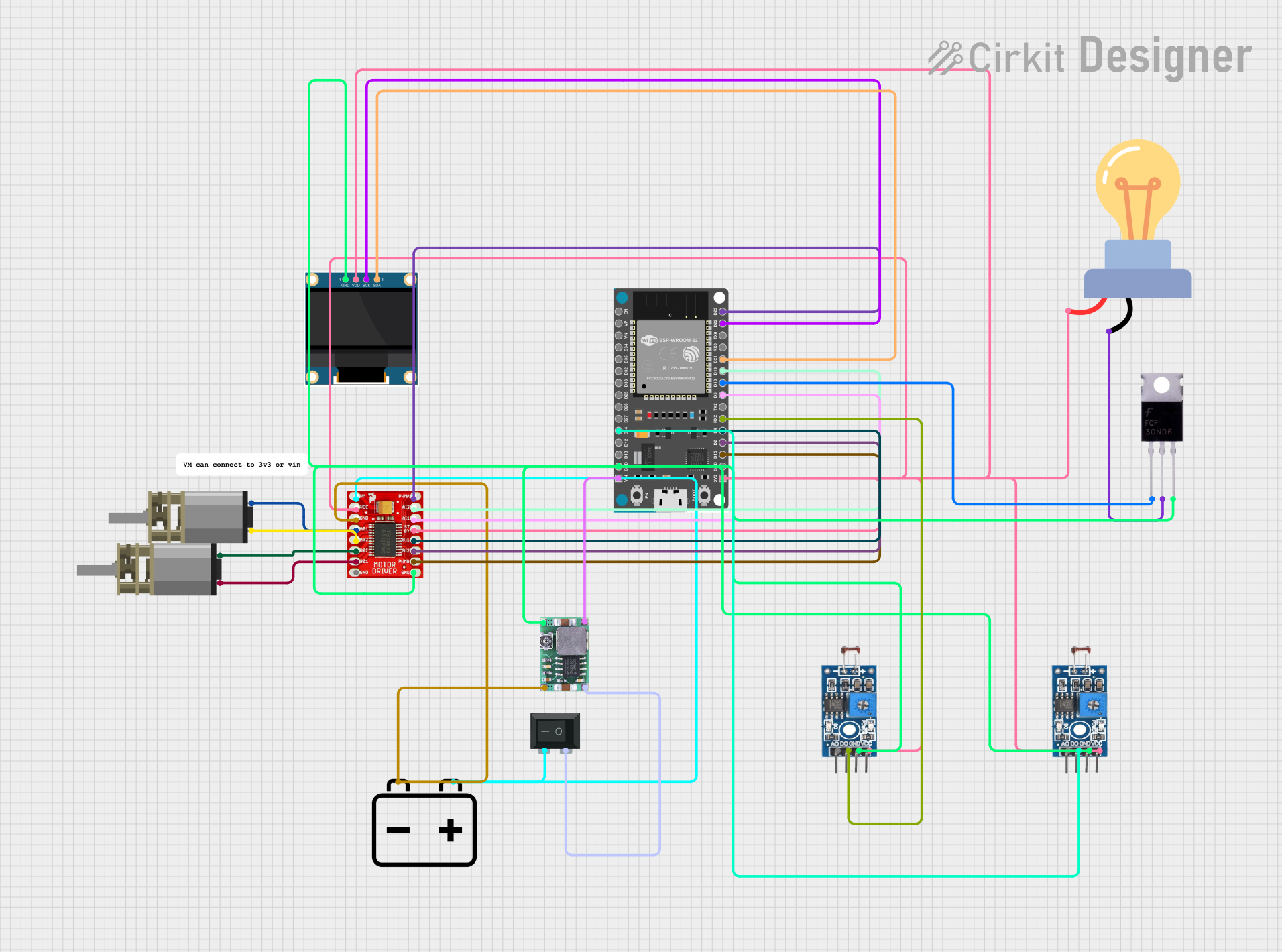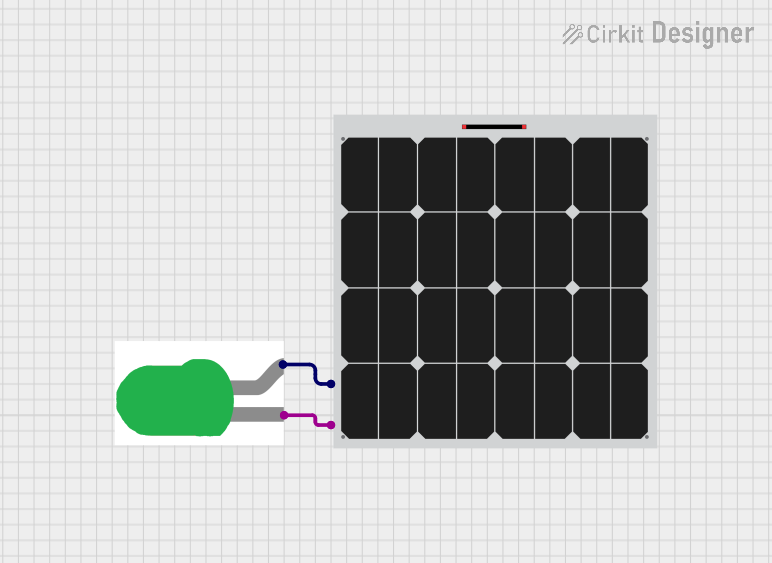
How to Use LED: Examples, Pinouts, and Specs

 Design with LED in Cirkit Designer
Design with LED in Cirkit DesignerIntroduction
A Light Emitting Diode (LED) is a semiconductor device that emits light when an electric current passes through it. LEDs are widely used in various applications due to their efficiency, longevity, and versatility. Common applications include:
- Indicators: Status lights on electronic devices.
- Displays: Digital clocks, calculators, and large display screens.
- Lighting: Residential, commercial, and automotive lighting solutions.
Explore Projects Built with LED

 Open Project in Cirkit Designer
Open Project in Cirkit Designer
 Open Project in Cirkit Designer
Open Project in Cirkit Designer
 Open Project in Cirkit Designer
Open Project in Cirkit Designer
 Open Project in Cirkit Designer
Open Project in Cirkit DesignerExplore Projects Built with LED

 Open Project in Cirkit Designer
Open Project in Cirkit Designer
 Open Project in Cirkit Designer
Open Project in Cirkit Designer
 Open Project in Cirkit Designer
Open Project in Cirkit Designer
 Open Project in Cirkit Designer
Open Project in Cirkit DesignerTechnical Specifications
Key Technical Details
| Parameter | Value |
|---|---|
| Forward Voltage | Typically 1.8V to 3.3V |
| Forward Current | Typically 10mA to 20mA |
| Power Rating | Typically 20mW to 100mW |
| Wavelength | Varies (e.g., 620-630nm for red) |
| Viewing Angle | Typically 20° to 60° |
| Lifespan | 50,000 to 100,000 hours |
Pin Configuration and Descriptions
| Pin Name | Description |
|---|---|
| Anode | Positive terminal (longer lead) |
| Cathode | Negative terminal (shorter lead) |
Usage Instructions
How to Use the Component in a Circuit
Identify the Anode and Cathode:
- The longer lead is the Anode (positive).
- The shorter lead is the Cathode (negative).
Connect to Power Source:
- Connect the Anode to the positive terminal of the power source.
- Connect the Cathode to the negative terminal of the power source.
Use a Current-Limiting Resistor:
- To prevent damage, use a resistor in series with the LED.
- Calculate the resistor value using Ohm's Law: ( R = \frac{V_{supply} - V_{forward}}{I_{forward}} )
Important Considerations and Best Practices
- Polarity: Ensure correct polarity; reversing the connections can damage the LED.
- Current Limiting: Always use a current-limiting resistor to prevent excessive current.
- Heat Dissipation: For high-power LEDs, consider heat sinks to manage heat dissipation.
- Series and Parallel Configurations: For multiple LEDs, consider series or parallel configurations based on your voltage and current requirements.
Example Circuit with Arduino UNO
// Example code to blink an LED connected to pin 13 of Arduino UNO
// Define the pin number for the LED
const int ledPin = 13;
void setup() {
// Initialize the digital pin as an output
pinMode(ledPin, OUTPUT);
}
void loop() {
// Turn the LED on (HIGH is the voltage level)
digitalWrite(ledPin, HIGH);
// Wait for a second
delay(1000);
// Turn the LED off by making the voltage LOW
digitalWrite(ledPin, LOW);
// Wait for a second
delay(1000);
}
Troubleshooting and FAQs
Common Issues Users Might Face
LED Not Lighting Up:
- Solution: Check the polarity and ensure the Anode is connected to the positive terminal and the Cathode to the negative terminal.
- Solution: Verify the current-limiting resistor value and connections.
LED Flickering:
- Solution: Ensure stable power supply and proper connections.
- Solution: Check for loose connections or faulty components.
LED Burning Out:
- Solution: Use an appropriate current-limiting resistor.
- Solution: Ensure the power supply voltage does not exceed the LED's rated voltage.
FAQs
Q: Can I connect an LED directly to a power source?
- A: No, always use a current-limiting resistor to prevent damage.
Q: How do I choose the right resistor for my LED?
- A: Use Ohm's Law: ( R = \frac{V_{supply} - V_{forward}}{I_{forward}} ).
Q: Can I use an LED with an Arduino without a resistor?
- A: No, you should always use a resistor to limit the current and protect the LED.
This documentation provides a comprehensive guide to understanding, using, and troubleshooting LEDs in various applications. Whether you are a beginner or an experienced user, these guidelines will help you effectively incorporate LEDs into your projects.